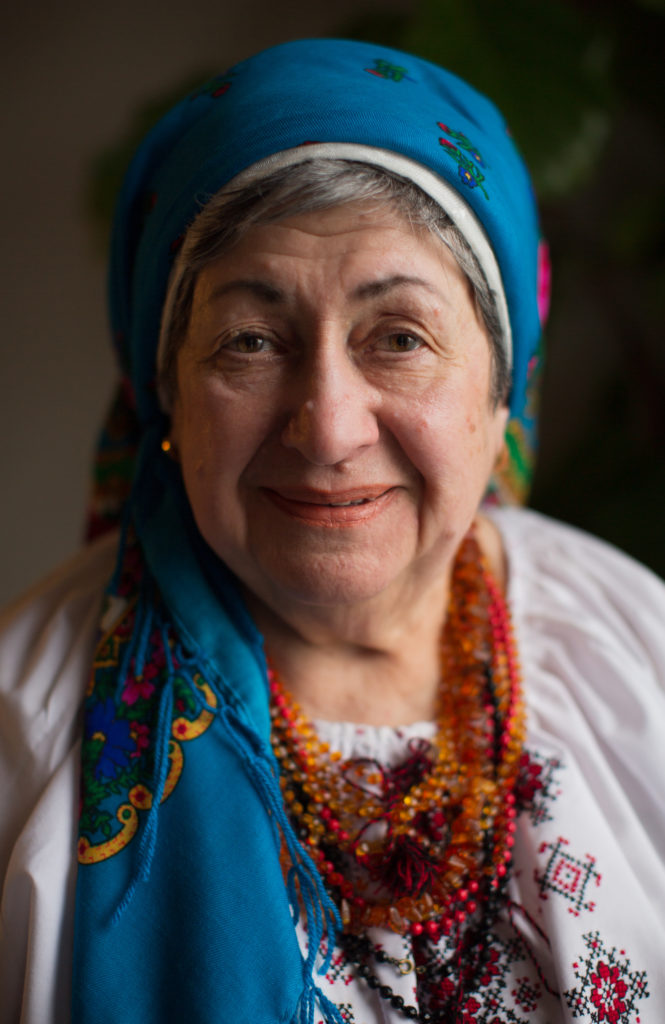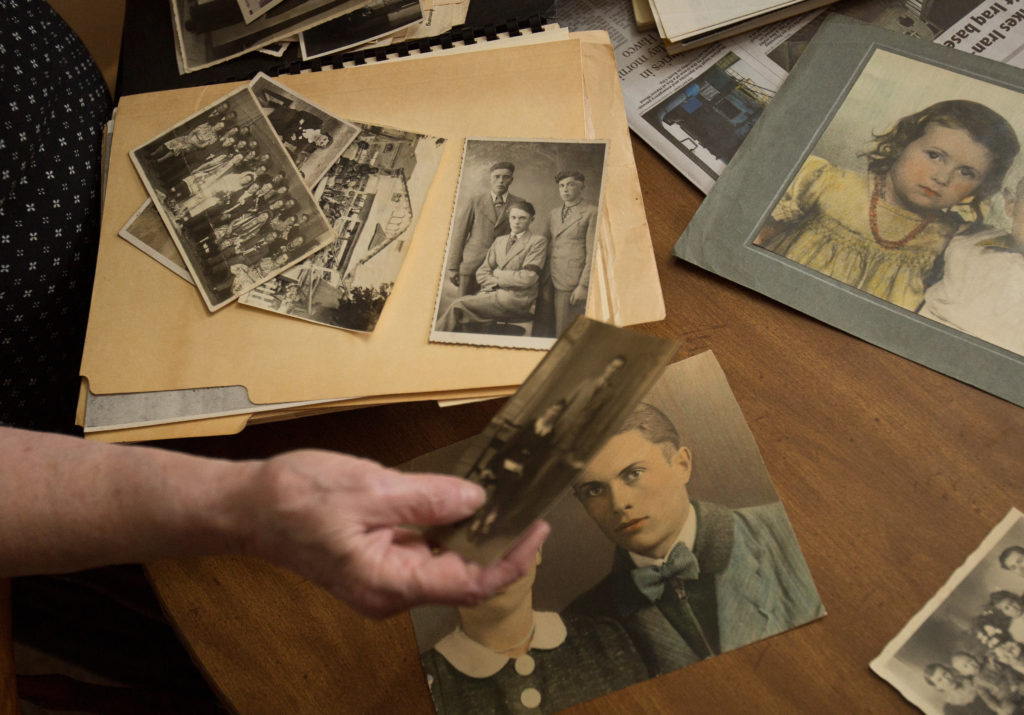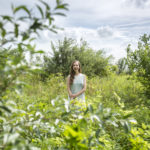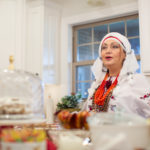Women do incredible things. This section features the stories of women who are a part of the Southeast Missouri community by way of living here, being from here or passing through. We hope these stories inspire you to connect with others and that they encourage you to be who you are in the world. We need you and your unique gifts.
This story was first published in the April 2020 issue of “The Best Years (TBY).”
In the entryway of Mary Yaremko’s home in Cape Girardeau, there hangs three pictures. Two are of Ivan Franko and Taras Hryhorovych Shevchenko, Ukrainian poets who represent the spirit of Ukraine. Between them hangs a picture of a trident, or tryzub, which is the Ukrainian national emblem, much like the eagle is in America. There is also a vase of wheat, a Ukrainian symbol of prosperity that pays homage to the memory of prevalent starvation under Soviet rule in the country’s past.
Throughout her home, there are other tributes to her native country, Ukraine. A clock with traditional Ukrainian embroidery patterns and red poppy images hangs in her kitchen, and pillows she embroidered in traditional Ukrainian design adorn her couches. At the holidays, she dons a traditional-style dress her friend made that Mary embroidered in Ukrainian style. She can still speak Ukrainian, which was the only language she spoke with her parents growing up, although she spoke mostly English with her own two children. In her dining room, she keeps a jar of rocks and bullet shells her late husband, Peter, collected from the yard of his childhood home in Berlyn, Ukraine, a village where the Germans and Russians fought.
“The culture, you know, we keep it,” Mary says.
And it is not hard to see why. Despite the suffering the people of her native culture have gone through, the Ukrainian culture she shares is one of hospitality, family, intricate beauty. She tells the story of her young life, which is a fascinating one.
Mary was born in the eastern part of Germany, in a town called Eichungen — now a part of western Poland — in 1942. Her parents, who were both Ukrainian, met on a platform waiting for a train to Germany in 1939, on their way to find work as the Soviets were moving into Ukraine around that time. Her family moved around the eastern part of Germany working on farms until the winter of 1944 to 1945, when they decided to leave that part of Germany because the Soviet army was closing in. They went through Dresden, Germany, hoping to persuade her father’s cousin to come with them. He declined, and her parents continued on. Within a few weeks, Dresden was bombed. Her family spent time in Leutenberg, Stuttgart and Ellwangen; while they were “running away” as Mary says from the Soviets, her father lost his and Mary’s mother’s identification papers after putting them in his pants pockets.
Thus, when the war ended, Mary and her family couldn’t go to the displacement camps because they didn’t have their identification papers. They lived with a German family on their farm for a time, which is where Mary learned some German. After her mother got ID papers sent to her from Ukraine and she sent the necessary information back, they were able to go to a displaced persons camp near Stuttgart, Germany, which Mary says “wasn’t good,” but was “better” than the detention camps the U.S. has for migrants now. Mary says at first, many nationalities were together in the camps, until the larger groups wanted to live together to have schools and churches in their own languages. Mary remembers there were camps for the Polish, Russians, Ukrainians, Estonians, Latvians and Lithuanians. They stayed in U.S. Army barracks, which were partitioned with blankets and sheets into makeshift rooms to give families privacy. Each family was given a table, beds and chairs. Families shared a communal kitchen and dormitory-style bathroom, and the children attended school in their own language. As people immigrated, camps were consolidated; during their stay in Germany from 1945 to 1951, Mary’s family also stayed in camps in Ellwangen, Ludwigsburg and Augsburg, Germany, where they had their own apartment and shared a kitchen and bathroom with a family from Lithuania. This is where Mary received her first Holy Communion and had a pet kitten.
Most of the people in these camps, she says, either wanted to stay in Germany or go to another country after the war was over. After the war, Germany was divided into the French, English, American and Russian zones. Joseph Stalin, Mary says, wanted people from Ukraine and Russia to go back to the Soviet Union, but many of them did not want to go back because they knew they would be killed or sent to Siberia. Mary says she has read a book that discusses the way many people committed suicide in order to avoid being sent back; America and Britain helped put a stop to the Soviet Union forcing people to return.
Mary’s parents were among those who wanted to leave Germany and settle in a different country. Initially, Mary’s father wanted to immigrate to Australia because he had friends there. Both times the family was scheduled to go, however, members of their family got sick, and they were not allowed on the ship. So, they turned their sights to America. Her father’s younger brother had come to the U.S. in 1949; he served as their sponsor in the U.S., which was mandatory for immigrants to have at that time in order to ensure they would have a job and a place to stay once they arrived.
Living in fear
To understand Mary’s parents’ urgency in not wanting to go back to their native country, it is important to understand the fear, starvation and suffering that pervaded the people of Ukraine under much of the Soviet Union’s rule of the country, which lasted from 1922 to 1991. Mary has several personal stories that illustrate the general feeling of the time.
One goes like this: when Mary was one year old and her family was still living in Germany, her parents received permission to visit Ukraine. Although there was fear that visitors originally from the Ukraine could be mistreated, kidnapped or taken back permanently into the country, her family was allowed to leave after their visit was over. They did, however, overstay their visit by one or two days, and the police were sent after them. Mary says her grandmother wanted her mother to leave her there in Germany with her while she worked there; Mary’s parents said no, which Mary is grateful for. Because they wanted her family back in the Soviet Union, her parents didn’t use their own names but instead used Mary’s name as a granddaughter when they communicated via letters with their extended family in Ukraine.
Of course, even after Mary and her family immigrated to America, there was fear surrounding visiting their home country again. She says she could always tell that the letters sent to her parents later on from her extended family members in Ukraine had been unsealed and read before they reached Mary’s family. In 1967, Mary went on a tour of Ukraine, where she met up with members of her extended family at her hotel while visiting Lviv, the last city on the tour that had taken Mary to Kiev, Poltava, Kaniv, Odesa and Crimea. They wouldn’t speak with her in the hotel, however, because they were afraid that devices used for spying had been planted in her room — specifically in light fixtures — to collect information about where her family was, what they were communicating to her extended family and if they were trying to help them escape from Ukraine. There was also the fear that it was dangerous to speak in the room in case the KGB (translated in English as Committee for State Security) would try to collect information to get Mary’s own family back to the Soviet Union. Instead, Mary and her extended family talked in the park across the street, where Mary says her family was still very cautious, looking around often and speaking softly. Mary says during this trip, she believes a spy was in her hotel room in Kiev because she left the light on, and when she got up in the morning, it was turned off.
This fear existed on both sides: Mary says her husband’s oldest brother was taken as a laborer to Germany in 1942 when he was around 16 years old, to help fulfill the quota mandate for young men that the Germans gave to the mayors of each village. When Peter’s family lived in Germany, his father tried to find Peter’s brother who was in a different section of the country; by the time he arrived, they had already taken the Ukrainian boys and others back to Russia. His family didn’t see his brother again until 1979 when he came to Pennsylvania to visit; he had never met his youngest brother. Mary recalls Peter saying that at this time, his oldest brother was afraid to speak to his family about anything in Ukraine or to speak ill of what was happening in the country because he had gone to the dentist the month before his visit and feared they had put something in his filling to spy on him.
Journey to America
Wanting to live freely instead of in this fear, on Aug. 3, 1951, Mary, her parents and two brothers came to America on the USS Stewart, a journey by ship that took 10 days. They sailed into the Port of New York. They were misidentified on the ship’s manifest as Polish because the western part of Ukraine was under Polish rule, a mistake Mary says her father would have been sure to right had he known about it.
“We were awakened before dawn and told to gather our belongings,” Mary recalls. “We got on deck and reunited with our father, because men had separate sleeping quarters. We could hear bells ringing; I assume they were church bells. Then we saw the Statue of Liberty — sailed right past her, the closest I’ve ever been. Brings back memories every time I fly into New York.”
Mary and her family settled in Allentown, Pennsylvania, living with her uncle in his two-bedroom apartment for two months; in addition to the three children in Mary’s own family, her uncle and his wife had two children. Although it was crowded, because of the importance placed on family in Ukrainian culture, it was not something Mary says Ukrainian families were not used to. Mary was three months shy of being nine years old.
“It was exciting, sort of,” Mary recalls. “Different, but we were finally out of [Germany], and that’s what my parents wanted, to start a new life. They did not want to go back to [Ukraine]. … As my husband would say, we were no longer DPs (displaced persons); we were displaced pilgrims.”
Old enough to be in the fourth grade at school but placed in the third grade because she had no knowledge of English, Mary sat in the back of the classroom knowing how to say only the words “hello” and “thank you,” which she had learned in the displaced persons camp in Germany. Eventually, her teacher got her a book about colors and told her to read. She says she remembers the book asked, “What is the color red?” and showed a red dress and a red apple.
“Those little things like that for some reason stick in my mind,” she says.
Mary’s father found a house that they rented for a couple of years and went to work as a tailor. He made her brother’s suits and her dresses, and her mother stayed home to raise the children until Mary’s youngest brother entered the first grade. They went to an Irish Catholic school three blocks away from their home, which they walked to each day.
Mary says when she and her family got to the States, she and her mother looked different from American women; they both had long braids down to their waists, although her mother wore hers up on her head. They also dressed differently and had accents. Mary recalls that she was sometimes ridiculed by her peers for being different. Then, when she was in fifth or sixth grade, the school instigated uniforms, so everyone looked the same.
As for Mary’s journey to Southeast Missouri? Her husband, Peter, who passed away in 2012, was also Ukrainian and had entered America through Ellis Island. He and his family had lived in the French zone of Germany post-World War II. He was on sabbatical as an assistant professor of political science at Southeast Missouri State University in Cape Girardeau when he went to Allentown to give his brother — who was attending college in Scranton, Pennsylvania — a desk. Peter’s friend, whom he had known while living in Germany, invited him to a birthday celebration at his church — which was also Mary’s church — and introduced him and Mary to each other. It was September 15, 1968.
Two weeks later, Mary says Peter called and asked if she wanted to go out for dinner when he came to watch his brother play soccer in nearby Bethlehem, Pennsylvania. She did.
“So that was the beginning of that,” Mary says. “It was long-distance. … It wasn’t love at first sight. He was just nice. It started out as friendship.”
They visited each other throughout the next year in Chicago, where Mary had family, and in Cape Girardeau and Allentown, and then got engaged. One year later, they got married. Mary moved to Cape Girardeau, where they built a home. The rest, as they say, is history.
Then again, so is everything before it.



